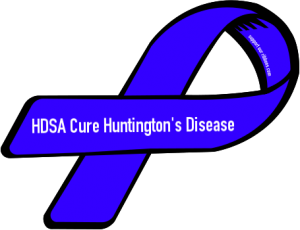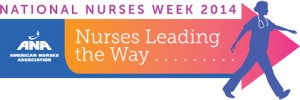
What is Huntington’s Disease?
Huntington’s disease (HD) is an inherited brain disorder that results in the progressive loss of both mental faculties and physical control. Symptoms usually appear between the ages of 30 to 50, and worsen over a 10 to 25 year period. Ultimately, the weakened individual succumbs to pneumonia, heart failure or other complication.
Everyone has the HD gene but it is those individuals that inherit the expansion of the gene who will develop HD and perhaps pass it onto each of their children.
Presently, there is no cure. Although medications can relieve some symptoms, research has yet to find a means of slowing the deadly progression of HD.
Current estimates are that 1 in every 10,000 Americans has HD and more than 250,000 others are at-risk of having inherited it from a parent. Once thought a rare disease, HD is now considered one of the more common hereditary diseases.
Every person who inherits the expanded HD gene will eventually develop the disease.
Over time, HD affects the individual’s ability to reason, walk and speak
Symptoms Include:
- Personality changes, mood swings and depression
- Forgetfulness and impaired judgment
- Unsteady gait and involuntary movements
- Slurred speech and difficulty in swallowing
The Scope of HD
Approximately 30,000 Americans have HD, but the devastating effects of the disease touch many more. Within a family, multiple generations may have inherited the disease. Those at-risk may experience tremendous stress from the uncertainty and sense of responsibility. In the community, lack of knowledge about HD may keep friends and neighbors from offering social and emotional support to the family, fostering unnecessary isolation. The Huntington’s Disease
Society of America (HDSA) has a nationwide network that provides support and referrals for individuals with HD and their families.
Genetic Testing for HD
Individuals can be tested for the gene that causes HD. The test may be used to confirm a diagnosis of HD, but may also be used as a predictive test before symptoms arise. Some individuals at-risk for HD feel that it is important to know whether they carry the gene. Others ultimately choose not to be tested. While the actual procedure is simple, the decision to have the test is not. HDSA recommends that persons wishing to undergo presymptomatic testing for HD do so at one of our HDSA Centers of Excellence, or at a testing center with specific training in working with HD. A list of these testing centers is available from HDSA
HD affects both sexes and all races and ethnic groups around the world.
The Decision to test is highly personal and should never be rushed or forced.
Who is At-Risk?
Every child of a parent with HD has a 50/50 chance of inheriting the expanded gene that causes the disease. If the child has not inherited this expanded gene, he or she will never develop the disease and cannot pass it on to their children.
Genetic Information Nondiscrimination Act of 2008 (GINA)
The Genetic Information Nondiscrimination Act (GINA) protects people from discrimination by health insurers and employers on the basis of their DNA information. This federal law also enables individuals to take part in research studies without fear that their DNA information might be used against them by health insurers or in the workplace.
However, GINA protections do not extend to long term care, disability or life insurance policies. Anyone contemplating testing should first consider adding one or more of these types of policies before starting the testing process.
Advocacy
HDSA advocacy works to advance legislation and policy to improve the lives of HD families by raising awareness about HD in the U.S. Congress, by promoting legislation, policy and regulations that would help individuals in the HD community, by educating Federal agencies about HD, and by partnering and collaborating with national organizations that have common goals. Learn more at www.hdsa.org/advocacy.
Join us in the fight against HD
YOU can help HDSA in our efforts to end HD and provide resources for those who must face this disease daily. Both funds and volunteers are needed. Contact the HDSA National Office to find out how YOU can help.
HD does not skip generations; if one does not inherit the expanded gene, one cannot pass it on
An End To HD?
In 1993, researchers identified the gene that causes HD. Since then, research has moved quickly towards developing treatments and, ultimately, a cure. HDSA supports the goals of clinical and basic research at leading research facilities globally.
Clinical and observational trials are an important way you can help to sustain the momentum of HD research and move potential new therapies through the approval process. Visit the Research section of the HDSA website for more information and to find a trial in your area. There are opportunities for all HD family members – gene positive, at-risk, gene negative, and caregivers – to participate.
About HDSA
The Huntington’s Disease Society of America (HDSA) is the largest 501(C)(3) non-profit volunteer organization dedicated to improving the lives of everyone affected by Huntington’s disease. Founded in 1968 by Marjorie Guthrie, wife of folk legend Woody Guthrie who lost his battle with HD, the Society works tirelessly to provide family services, education, advocacy and research to provide help for today, hope for tomorrow to the more than 30,000 people diagnosed with HD and the 250,000 at-risk in the United States.
Where to find help
You are not alone in facing HD. HDSA has developed a nationwide network that includes Chapters and Affiliates, HDSA Centers of Excellence, Support Groups, and Social Workers that are ready to assist you with referrals and resources in your area. To learn more, please visit www.hdsa.org or call 888-HDSA-506.
Research worldwide is working to unlock the mystery of HD and find a cure



